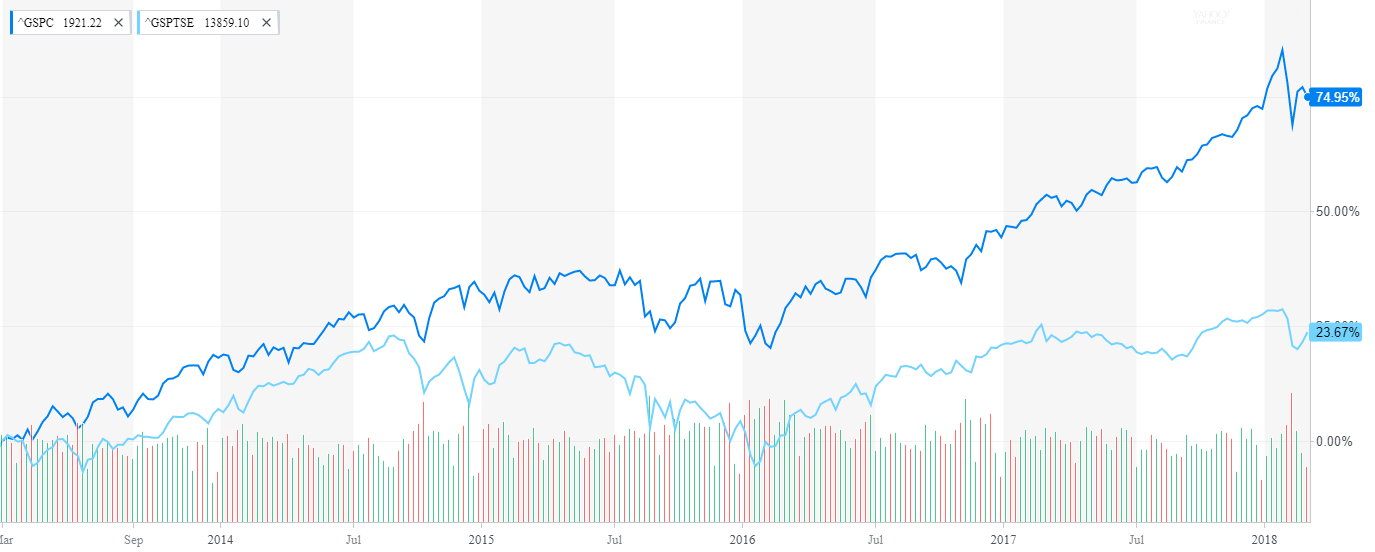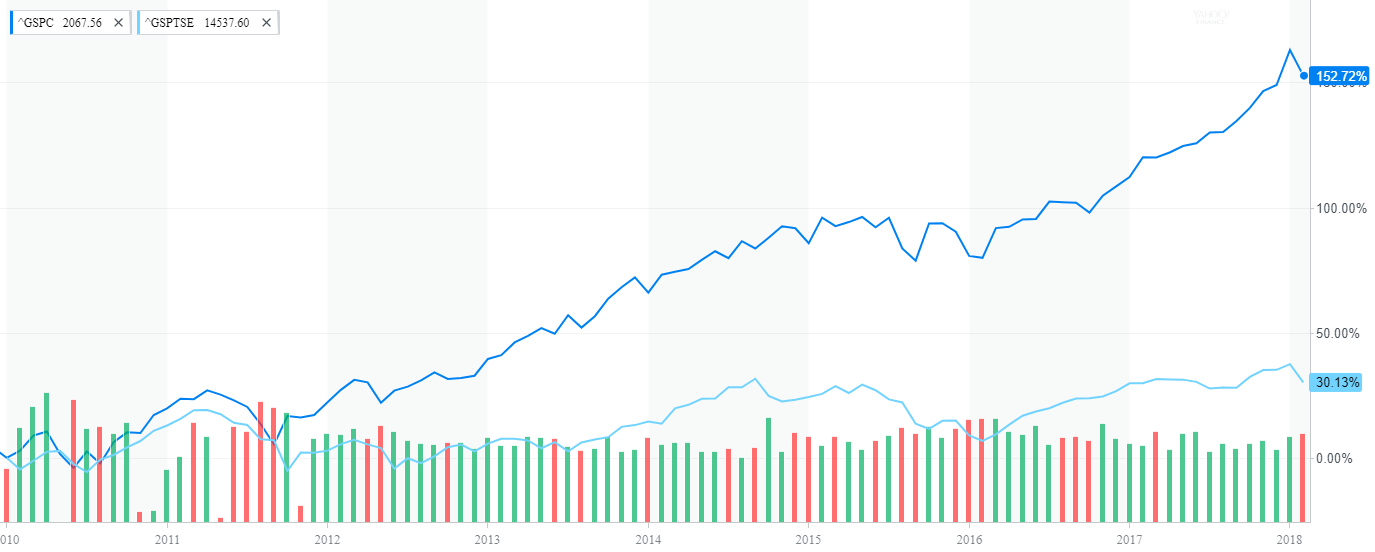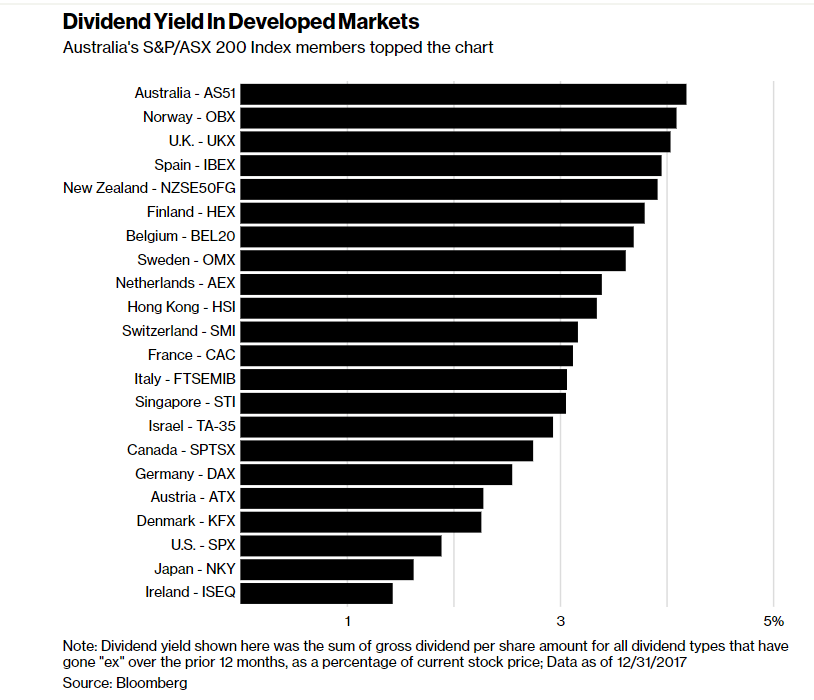US equity markets fell yesterday with the Dow down 1.68% and the S&P 500 off by 1.33%. After a few years of smooth sailing investors are suddenly facing the gyrations of a volatile market. A myriad of reasons are being thrown around for the shift in market directions including rising interest rates, valuation concerns, extreme speculation driven by investors’ fascination with crypto currencies and marijuana stocks, sky-high margin debt, etc. The cause of yesterday’s fall was apparently Trump’s plan to slap tariffs on steel and aluminum imports.
Day-today market movements are more of a worry for short-term traders than long-term investors. Instead of focusing on the daily movement of markets, long-term investors can patiently wait, monitor and take advantage of cheaper prices. When there is heavy selling usually quality names also gets thrown out the window. So astute investors can grab stocks at attractive prices when everyone else is dumping.
Listed below are ten stocks from different sectors with their current dividend yields. Investors can track and add these companies after further research. It is also important to remember that adding in phases is a smart move than going all in at once.
1.Company: General Mills Inc (GIS)
Current Dividend Yield: 3.88%
Sector: Food Products
General Mills fell from over $70 early last year to $50.57 yesterday. More recently the stock traded around $60. The current decline was attributed to the company’s expensive acquisition of pet food marker Blue Buffalo.
2.Company: Canadian National Railway Co (CNI)
Current Dividend Yield: 1.84%
Sector: Railroads
Despite decent earnings past quarter. the stock has barely moved strongly. As one of Canada’s two railroads with extensive network in the US market CN is always a long-term buy especially when it is on sale.
3.Company: Kimberly-Clark Corp (KMB)
Current Dividend Yield: 3.61%
Sector: Household Products
4.Company: Fomento Economico Mexicano SAB de CV (FMX)
Current Dividend Yield: 1.46%
Sector: Beverages (Nonalcoholic)
Country: Mexico
5.Company: Eni SpA (E)
Current Dividend Yield: 5.52%
Sector:Oil, Gas & Consumable Fuels
Country: Italy
6.Company:Diageo PLC (DEO)
Current Dividend Yield: 2.54%
Sector: Beverages
Country: UK
7.Company:Consolidated Edison Inc (ED)
Current Dividend Yield: 3.82%
Sector:Multi-Utilities
8.Company: Church & Dwight Co Inc (CHD)
Current Dividend Yield: 1.77%
Sector:Household Products
9.Company: Valeo SA (VLEEY)
Current Dividend Yield: 2.16%
Sector: Auto-parts
Country: France
10.Company: BASF SE (BASFY)
Current Dividend Yield: 3.18%
Sector:Chemicals
Country: Germany
Note: Dividend yields noted above are as of Mar 1, 2018. Data is known to be accurate from sources used.Please use your own due diligence before making any investment decisions.
Disclosure: Long GIS, CNI





